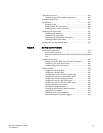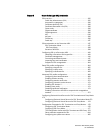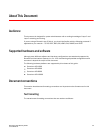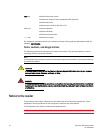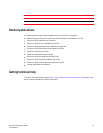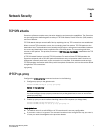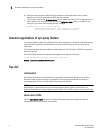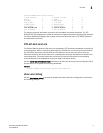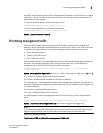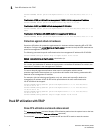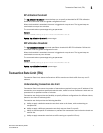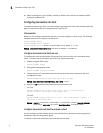
ServerIron ADX Security Guide 1
53-1002440-03
Chapter
1
Network Security
TCP SYN attacks
ServerIron software contains many intrusion detection and prevention capabilities. The ServerIron
can be configured to defend against a variety of TCP SYN attacks, Denial of Service (DoS) attacks,
and Smurf attacks.
TCP SYN attacks disrupt normal traffic flow by exploiting the way TCP connections are established.
When a normal TCP connection occurs, the connecting host first sends a TCP SYN packet to the
destination host. The destination host (actually the ServerIron, acting as an intermediary between
the source and destination hosts) responds with a SYN ACK packet. The connecting host then
returns an ACK packet. This process, known as a “TCP three-way handshake”, establishes the TCP
connection.
A TCP SYN attack floods a host with TCP SYN packets. For each of these TCP SYN packets, the
ServerIron responds with a SYN ACK packet and adds an entry to its session table. However, no
ACK packet is actually sent back, so the connection is incomplete. If the attacker sends enough
TCP SYN packets, the session table fills up with incomplete connections, and service can be denied
to legitimate TCP connections.
syn-proxy
IP TCP syn-proxy
Configure the ip tcp syn-proxy command as shown in the following.
1. Configure syn-proxy in the global mode.
ServerIronADX(config)# ip tcp syn-proxy
Syntax: ip tcp syn-proxy
NOTE
You must configure ip tcp syn-proxy command only at the global level, to turn on and off the
global syn-proxy flag.
2. Enable syn-proxy on each interface handling inbound SYN requests (no change here).
ServerIronADX(config)#interface e 3/1
ServerIronADX(config-if-3/1)# ip tcp syn-proxy in
Usage guidelines:
• The default value for a valid ACK time is 32 seconds and is not user configurable.
• If you enter a value, it is ignored. The command remains in the config file the way you enter it,
in case you need to downgrade to the previous release.



